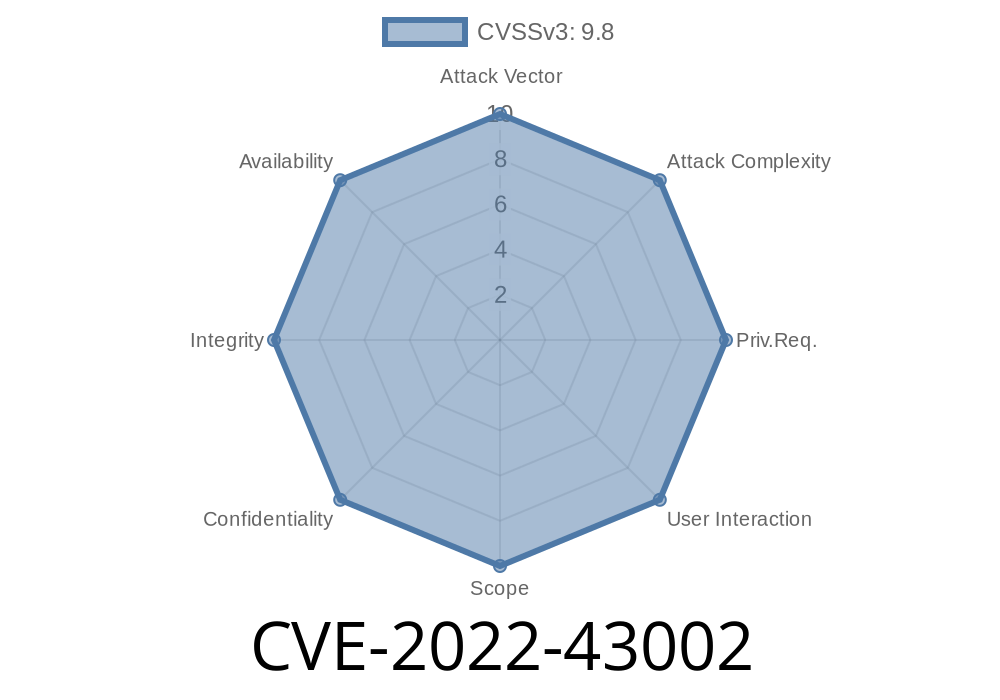A new vulnerability (CVE-2022-43002) has been discovered in D-Link DIR-816 A2 1.10 B05, a popular Wi-Fi router, which is prone to a stack overflow attack. This vulnerability is found in the wizardstep54_pskpwd parameter at /goform/form2WizardStep54 in the router's internal web interface, allowing attackers to execute arbitrary code remotely.
About the Vulnerability
D-Link DIR-816 A2 1.10 B05 is a widely-used router that provides internet connectivity to several devices within a network. However, it has been revealed that this device contains a stack-based buffer overflow vulnerability, which occurs due to insufficient input validation of the 'wizardstep54_pskpwd' parameter in the router's web interface.
This issue allows attackers to remotely execute arbitrary code on the device with privileges of the user running the web interface (usually 'admin'). Successful exploitation of this vulnerability can result in a complete takeover of the affected device, allowing an attacker to intercept network traffic, perform man-in-the-middle attacks, or even turn the router into a botnet client.
Exploit Details
The vulnerability is located in the way the router forwards the data received from the web interface to other processes without validating the data length. The affected parameter is 'wizardstep54_pskpwd,' which is propagated from the web interface to the system binary and then passed to the /goform/form2WizardStep54 endpoint.
An attacker can successfully exploit this issue by sending a specially crafted HTTP POST request containing an overly long 'wizardstep54_pskpwd' value, causing a buffer overflow in the stack and leading to arbitrary code execution.
Here's an example of an exploit code snippet
import requests
TARGET_URL = "http://<Router_IP>/goform/form2WizardStep54";
EXPLOIT_PAYLOAD = "A" * 800 # Overly long value
data = {
"wizardstep54_pskpwd": EXPLOIT_PAYLOAD
}
response = requests.post(TARGET_URL, data=data)
if response.status_code == 200:
print("Exploit sent successfully")
else:
print("Failed to send exploit")
Replace the <Router_IP> with the IP address of the router you want to attack.
Original References and Mitigations
The vulnerability has been assigned CVE-2022-43002. The original discovery of this issue is attributed to independent researchers who reported it to D-Link. The details can be found at the following link:
- CVE Details
D-Link has been informed of the vulnerability, and it is expected that they will issue a patch soon. In the meantime, users of the D-Link DIR-816 A2 1.10 B05 router are advised to:
Conclusion
CVE-2022-43002 is a critical vulnerability found in D-Link DIR-816 A2 1.10 B05, which allows an attacker to take control of the router by exploiting a stack overflow via the wizardstep54_pskpwd parameter at /goform/form2WizardStep54. Although there is no official patch yet, it is crucial to stay vigilant and update your router firmware as soon as it is available from D-Link. Users should also take necessary precautions to limit WAN exposure and monitor network activities for any signs of intrusion.
Timeline
Published on: 10/26/2022 19:15:00 UTC
Last modified on: 10/28/2022 14:45:00 UTC
